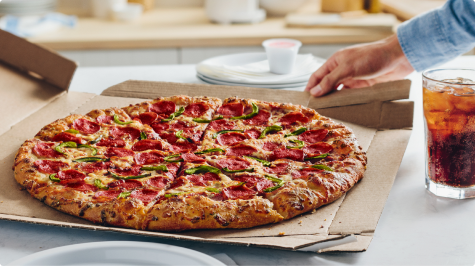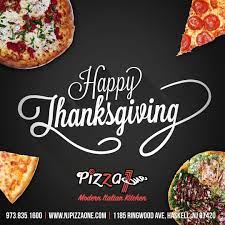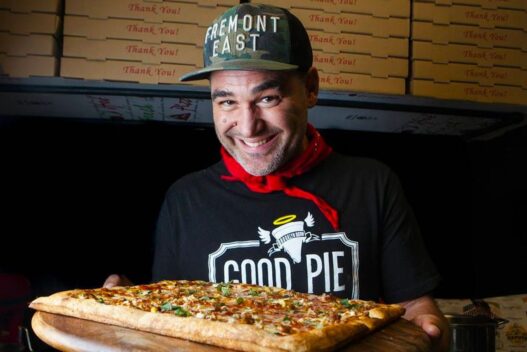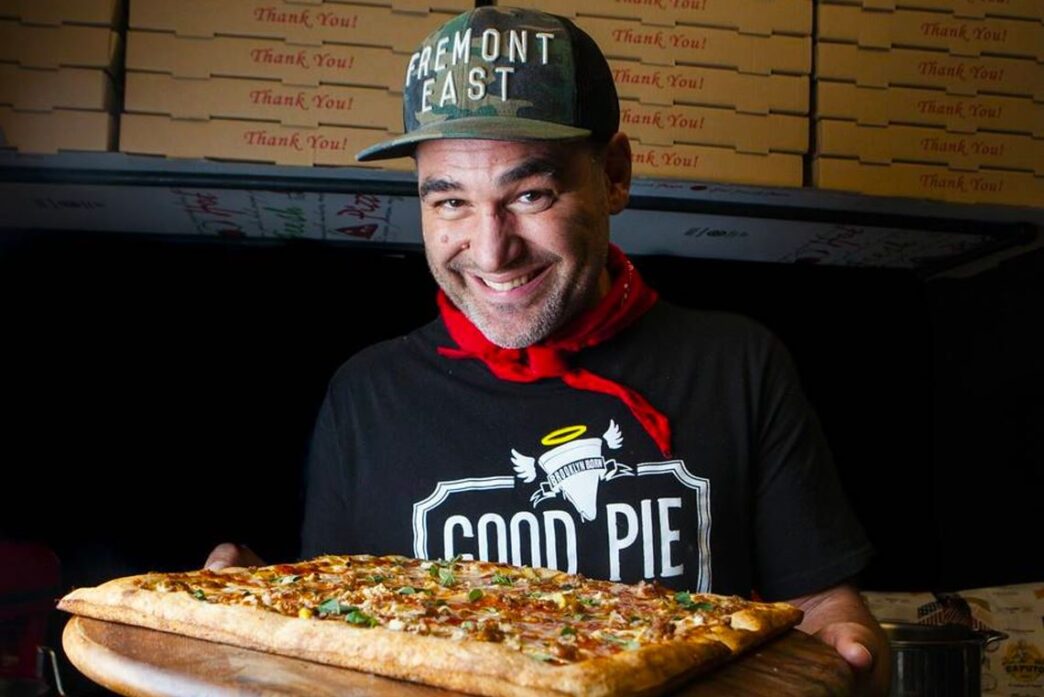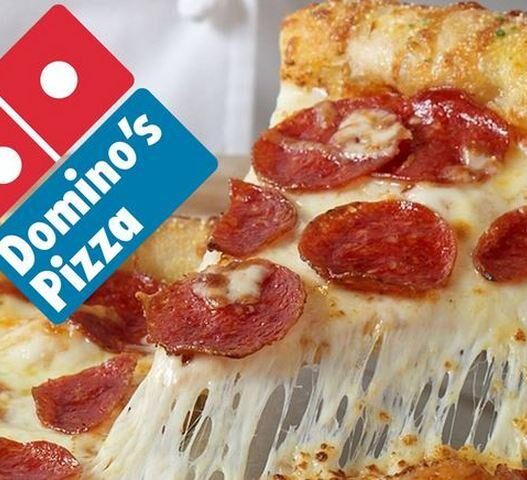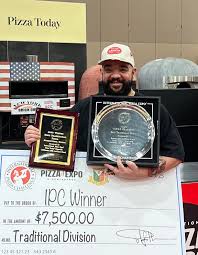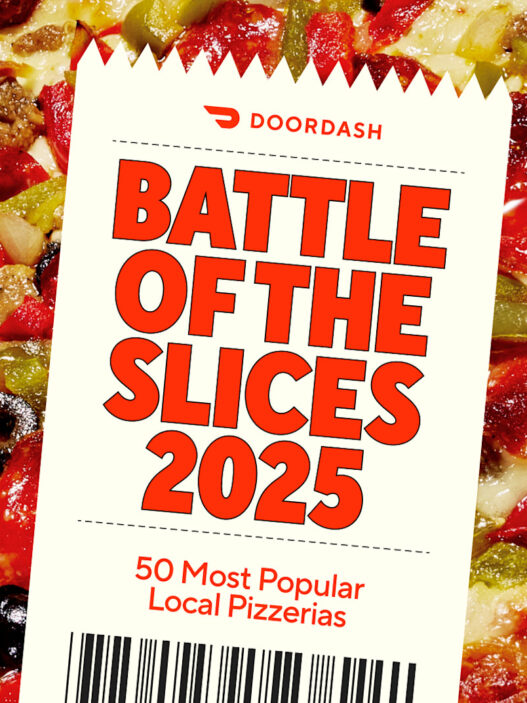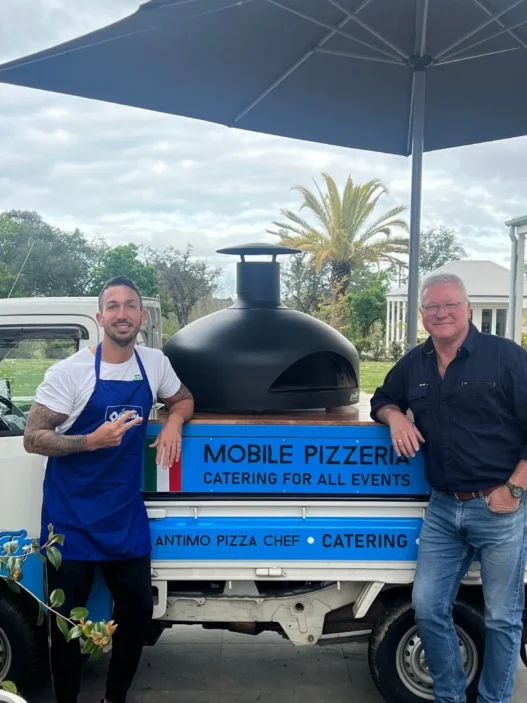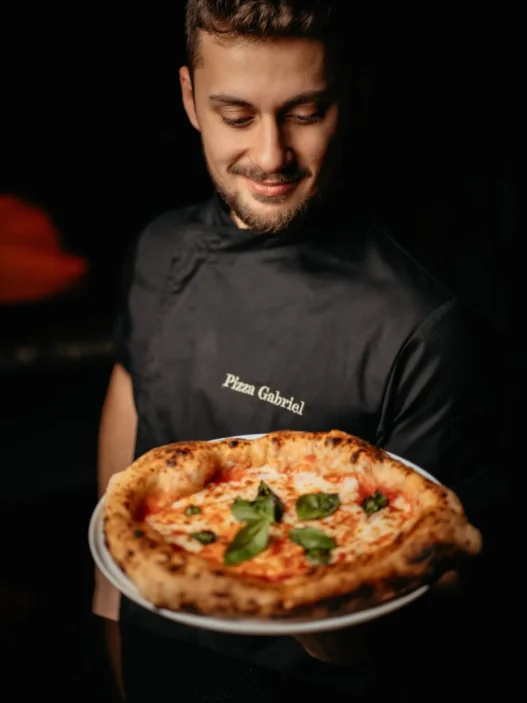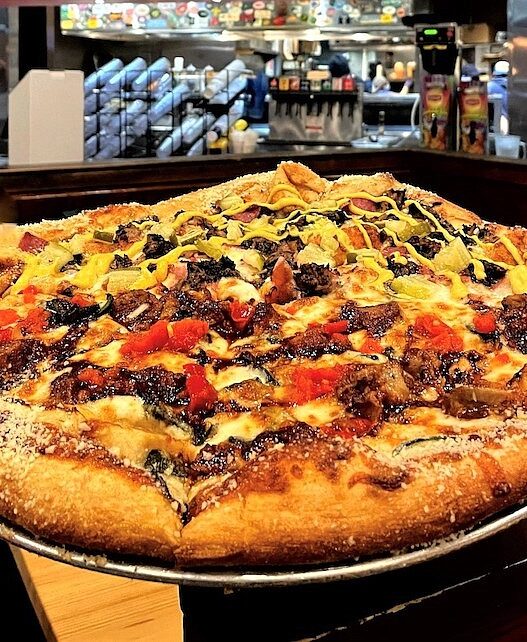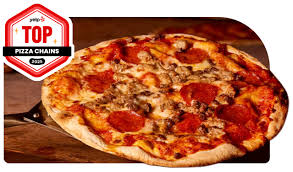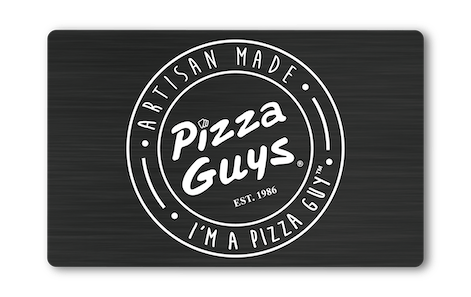Long before Las Vegas knew him as the man behind Good Pie, Vincent Rotolo was a 12-year-old kid on Bleecker Street, hustling for a BMX bike and unknowingly shaping his future. His story stretches from the smoky ovens of John’s of Bleecker Street to the neon heat of Vegas, crossing through heartbreak, loss, competition, and a faith found in flour.
Rotolo’s journey isn’t a straight line. It’s a series of left turns from dishwasher to busboy, manager to competitor, student to mentor all bound by a single through line: pizza as a language of love and survival. What follows is a conversation tracing that evolution — from the first pie he ever touched to the culture he’s now building in Las Vegas.
Q: How did your pizza journey begin?
A: I started the pizza journey in like 1985. I was 12 years old. My father grew up at 272 Bleecker Street — the building where John’s of Bleecker Street was located. He lived above John’s Pizza. I wanted a fancy BMX that cost $300. My father said, “I’m not spending $300 on a bike for you. You could go work at John’s downstairs.” I made the $300 and got bit by the bug.
Q: Why did you leave the kitchen for the front of house?
A: I realized the bus boys were making tips and real money. I left the kitchen, became a bus boy, then server, bartender, manager a whole front-of-house career. But inside I always felt, “I’m a pizza maker, but I’m not making pizza.”
Q: What reignited your hands-on pizza making before opening a restaurant?
A: I started making pizza at home went through a grilled pizza phase. I fell in love with grilled pizza because I could use charcoal to infuse flavor like I remembered from John’s when I was a kid. I traveled with a cast-iron grill to picnics, tailgates, everywhere.
Q: What early restaurant experiences made you believe you could open your own place?
A: I helped open The Meatball Shop in 2009. Tiny place, 39 seats, did over $4 million the first year with a $16 check average ,four-hour lines. The New York Times wrote about it the first week. I thought, “I might be able to open my own restaurant.”
Q: How did the 2008 crash change your path?
A: I built momentum to open a pizzeria/wine bar in NYC, then Madoff and the financial crisis hit. Investors froze. I was demoralized. Visiting Las Vegas my dad was there I saw things happening and decided to pull the trigger on Vegas instead.
Q: How did family loss push you to go all-in?
A: I moved to be near my dad. He passed about five and a half months later. Eleven months after that, my mom passed. I said, “We’re all going to die. I’m doing this.” The goal shifted from just getting funding to being majority owner.
Q: How did you end up owning 85% of your first location with no money in?
A: Press from Evil Pie, operational track record, and getting on Chopped gave leverage. I borrowed $10,000 from my son Justin Rotolo, raised $25,000 opened for $35,000, spent $24K, had $11K in the bank and we were open. I signed a lease in a fully equipped space before raising all the money — “Come see what I’m already doing.”
Q: Which Vegas roles built your credibility?
A: Started at Bellagio as assistant manager; opened Flour & Barley; went to Dom DeMarco’s as director of operations; opened 800 Degrees at Monte Carlo as GM — first time I could touch dough and make pizza as the GM.
Q: Who were the mentors who changed your trajectory?
A: John Arena became my Vegas godfather — asked thought-provoking questions, never handed me a recipe. Also Paulie Gee and Michael Ayoub (Forino) — first GM job in 2006. They were the guys I called to figure things out.
Q: What competition moment proved you belonged?
A: I got a 10 p.m. call — “We’ve got a spot open.” I made dough in my brother’s garage with a cordless drill and a Lowe’s bucket. Built a white pie with kale, caramelized onions, bone marrow–foie gras “icicle shavings,” and Grand Cru pecorino from Tuscany. Took fifth in a field with former national and world champs. Leah Scafidi (Skirto) helped me when my pie stuck to the peel — that showed me the culture.
Q: How did Evil Pie and Chopped lead to Good Pie?
A: That one competition led to Evil Pie. Evil Pie led to Chopped. Chopped led to Good Pie. I even shot the Chopped intro as “Good Pie” before Good Pie existed.
Q: What’s the core of your mentorship philosophy?
A: A true mentor asks questions that lead you to discover your own recipes. John has never given me a recipe. He led me to develop my own. I try to do the same for others.
Q: Why make “Grandma” your signature instead of gluten-free?
A: Branding and identity. I didn’t want to be known as “the gluten-free guy.” Working with the Ceserano family at King Umberto in Elmont reignited my love for Grandma pizza — and the childhood drive from Brooklyn to Elmont triggered memories of Sunday dinners with my grandmother.
Q: How did you bring the Grandma story into the restaurant?
A: I asked the Ceseranos for their blessing espresso, lemon twists, felt like asking for a daughter’s hand. Then I led with Grandma: the Grandma Wall, grandma spoons, a whole identity tied to care, nostalgia, and being nurtured across cultures.
Q: What’s the emotional origin of your gluten-free pizza?
A: I was dating a girl who later was diagnosed with celiac. After we split and she moved to Europe, working on gluten-free became how I healed the heartbreak. It took ten years. The better the gluten-free got, the more I could let go.
Q: Which product partnership helped you crack gluten-free at a high level?
A: I met Chris from Orlando Foods at that first competition. He gave me a bag of Caputo Fiore Glut and educated me on products. I Americanized it for Detroit-style it helped them and opened doors for me. A win-win.
Q: Do you see yourself as an “elite” pizza maker?
A: There’s a part of me that doesn’t. I look at guys like Chris Decker and Mike Palazzolo and I can’t compare but my emotional connection to pizza? I’ll put that up against anyone. I can lead with culture, inspire a team. I don’t need to do it all myself.
Q: What’s the mission as your team grows?
A: I have 80 employees, soon to be 120. I can grow not by my hands only, but by love of building culture, caring for people, inspiring others as an owner, father, and community member who wants to help.
Q: When is the Las Vegas Pizza Festival and what does it represent?
A: It’s November 15. John Arena and I were driving back from California Pizza Fest around 2018–19. He planted the seed: do our own thing in Vegas. It’s for us, by us high-quality equipment, no need for a spokesman. The brotherhood and sisterhood of pizza makers like when Leah helped me is the face of it.
Q: Big picture: what carried you from Evil Pie to Good Pie?
A: Community, mentors, and divine intervention. I wasn’t a deep believer then, but those moments led me to faith. Every breadcrumb — mentors, competitions, Chopped, loss, family ,pushed me to say, “I’m doing this,” and to build Good Pie with purpose.
Rotolo’s story is less about dough and more about devotion to people, to process, to perseverance. From a $300 bike to an 85-percent ownership stake, from heartbreak to healing through gluten-free experimentation, his career mirrors the shape of the perfect pie: a circle that always returns to its center.
For Rotolo, that center is clear , faith, family, and the belief that great pizza can still tell a human story.




